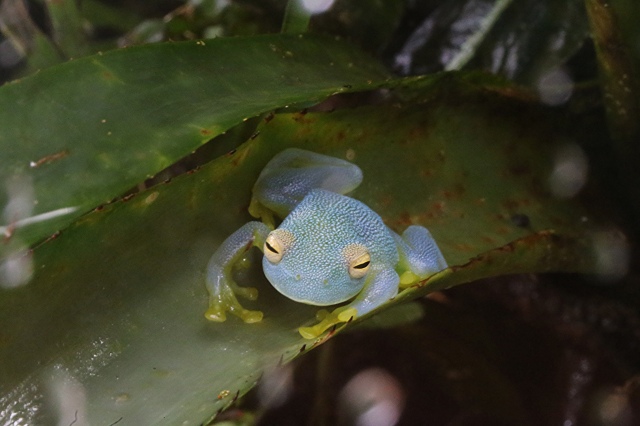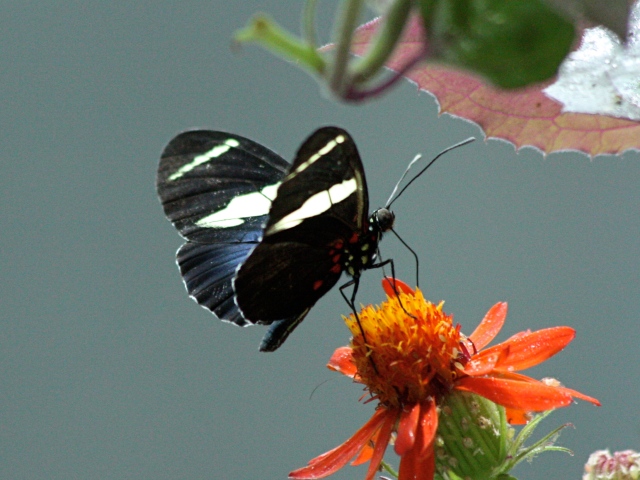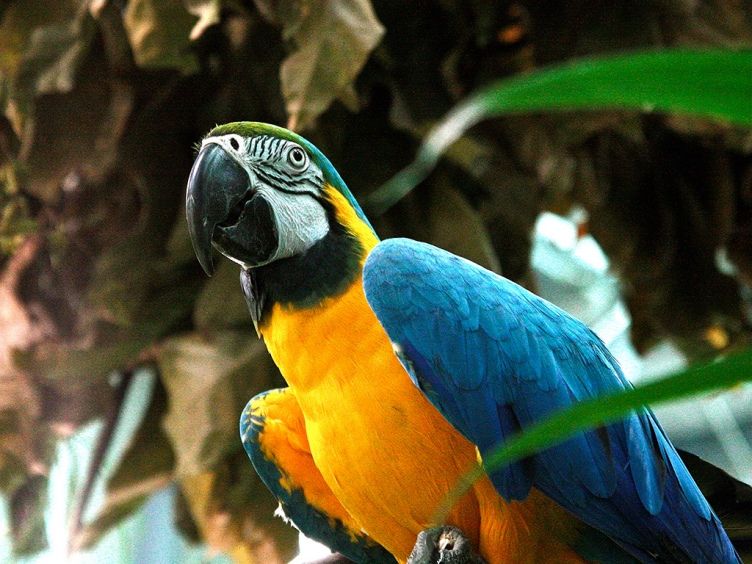TAXONOMY
Kingdom: Animalia
Phylum: Chordata
Class: Amphibia
Order: Anura
Family: Dendrobatidae
Genus/species: Phyllobates lugubris
GENERAL CHARACTERISTICS: P. lugubris are small frogs, less than an inch in length, with the females slightly larger than the males. The head is longer than wide with a round snout. The back is jet black with paired dorsolateral stripes, of various colors including yellow, orange, gold or turquoise. They also have a thinner lighter turquoise or white ventrolateral stripe on each side from the tip of the snout to and along the front limbs.

DISTRIBUTION/HABITAT: This species inhabits the humid lowland and the premontane zone along the Atlantic coast of southeastern Nicaragua through Costa Rica to Central Panama. The frogs live in the leaf litter of the forest floor, near slow-moving water.
DIET IN THE WILD: Eat ants, mites, beetles, and spiders.
REPRODUCTION: Breeding occurs in the wet season. Males call to attract females, with a chortle that sounds like a hand rubbing an inflated balloon. A pair works together to create a ground nest in dry leaf litter. The female then deposits her eggs, which the male fertilizes. The male takes over and periodically moistens the eggs in the nest until the eggs hatch. He then carries 5 to 10 tadpoles at a time on his back to aquatic rearing sites. In about 2 months the tadpoles metamorphose into froglets that are about a half an inch long.

MORTALITY/LONGEVITY: Most poison dart frogs can live from 10 to 15 years in captivity. In general poison dart frogs have few predators. Their bright colors warn potential predators that they are toxic, even though in reality many of them merely taste bad because of sour but low potency toxins in their skins. Thus this group provides examples of both aposematic coloration and Batesian mimicry (an edible animal is protected by its resemblance to a noxious one that is avoided by predators).
CONSERVATION: IUCN Red List Least concern (LC) This species is relatively safe due to its wide distribution, tolerance to modification to its habitat, and its fairly large population. Some collected specimens have been found to be infected with Batrachochytrium dendrobatidis (chytrid fungus), but the pathogenic impacts are unclear.
REMARKS: Some South American natives capture other members of this genus (Phyllobates terribilis, P. bicolor, P. aurotaenia) to poison blow-gun darts. However, Phyllobates lugubris is not as toxic as other species in its genus and has not been documented to have been hunted primarily for its poison
P. lugubris is sympatric with another species, Eleutherodactylus gaigeae, known as the “false poison-dart frog.” This species mimics the appearance of P. lugubris in order to fend off predators, by having two paired red stripes running the length of the body. However, E. gaigae is a non-toxic mimic and does not produce batrachotoxins.
References
California Academy of Sciences Animal Attractions, Docent Rainforest Training Manual 2014
Ron’s WordPress shortlink http://wp.me/p1DZ4b-1t1
Ron’s flickr https://www.flickr.com/photos/cas_docents/14933390504/in/set-72157620708938680
Amphibiaweb amphibiaweb.org/cgi/amphib_query?where-genus=Phyllobates&…
IUCN Red List www.iucnredlist.org/details/55263/0
Encyclopedia of Life eol.org/pages/1025277/details







 REPRODUCTION: Pupal maters. Males don’t even wait until the female emerges from the pupa. Instead they physically break open her pupa and copulate as soon as her genitalia are accessible. Larvae of sara longwing butterflies avoid harm from cyanogenic leaves by metabolizing cyanogenic glycosides enzymatically.
REPRODUCTION: Pupal maters. Males don’t even wait until the female emerges from the pupa. Instead they physically break open her pupa and copulate as soon as her genitalia are accessible. Larvae of sara longwing butterflies avoid harm from cyanogenic leaves by metabolizing cyanogenic glycosides enzymatically.












